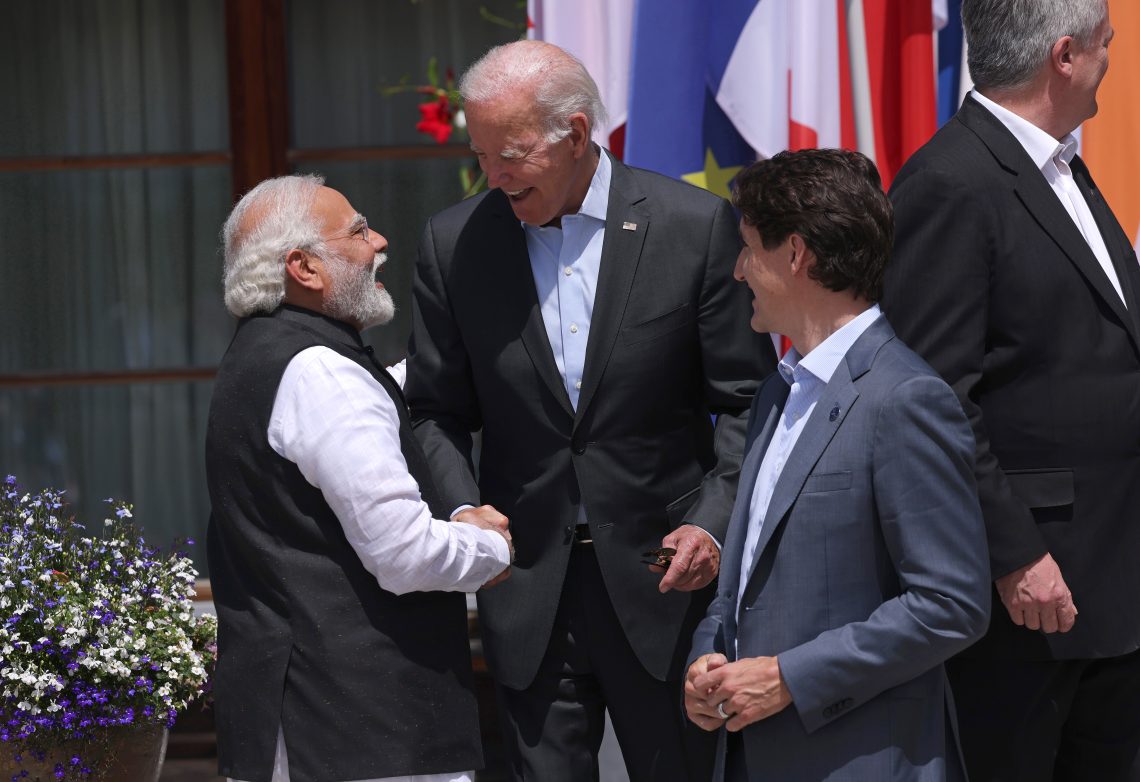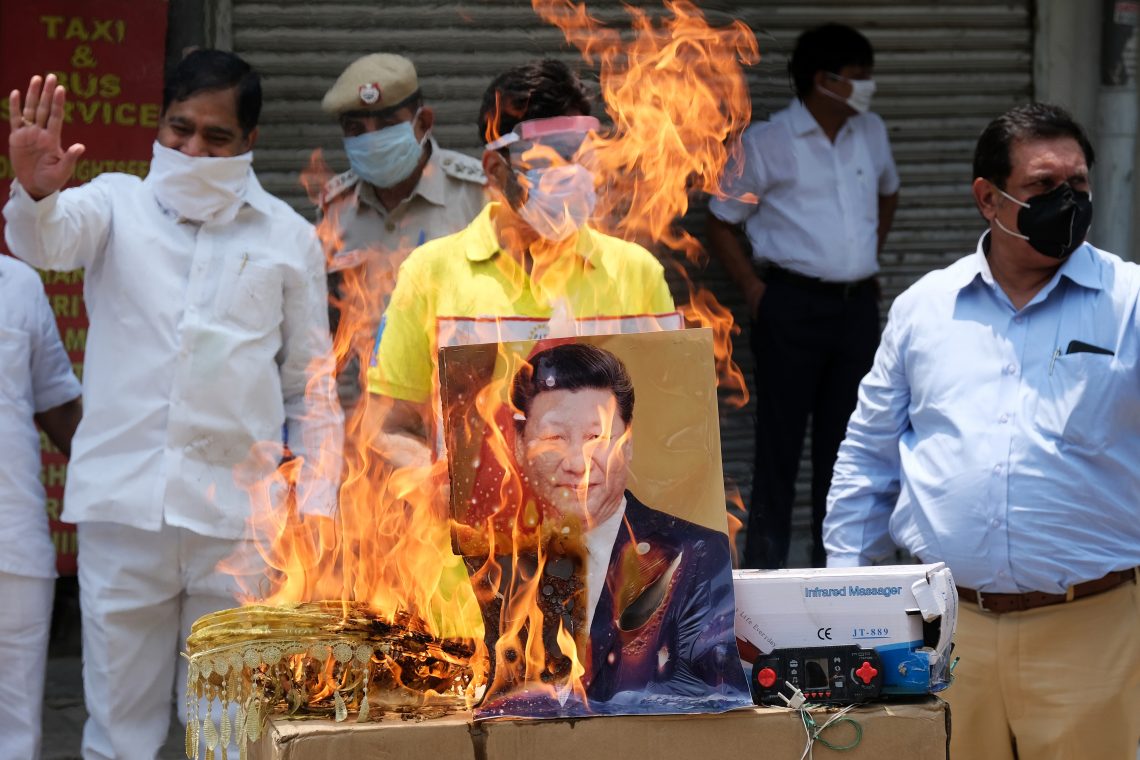As Russia’s war grinds on, India-U.S. relations set to strengthen
With the United States mostly overlooking India’s neutrality in Russia’s war on Ukraine, the prospects are encouraging for closer Washington-New Delhi ties.

In a nutshell
- Mutual antagonism to China shapes the foreign policies of both countries
- America is committed to its Quad partners of India, Japan and Australia
- India’s ties with Moscow will fray as Russia’s war on Ukraine drags on
The India relationship has been one of the few elements of American foreign policy that still attracts bipartisan support in the United States. Whether it was Republican presidents like George W. Bush and Donald Trump or the Democratic administrations of Barack Obama and Joe Biden, successive U.S. governments have invested heavily in closer strategic and economic relations with India. The fabric of the relationship has other strands. At the geopolitical level is the antagonism both countries have toward China. Other contributors are a rapidly widening economic and technological relationship and the support of a small but highly influential Indian American community.
Biden administration
Indian diplomats say the election of Joe Biden as the American president has made little difference in bilateral relations; there has been almost complete continuity. Concerns that President Biden would distance himself because of Prime Minister Narendra Modi’s religious nationalism have proven unfounded. Washington has limited itself to pro forma comments about the importance of values and pluralism.
Mr. Biden is committed to the Quad (India, Australia, Japan and the U.S.) and elevated its meetings to summit-level shortly after entering the White House. The Quad’s four members believe that, in the long term, the most consequential element of the strategic competition with China will be in technologies like artificial intelligence, green hydrogen, semiconductors and quantum computing. Countries like India and Japan, strategically aligned against China and with technological capabilities, are therefore of unique geopolitical utility to the U.S. The Quad’s expanded agenda encapsulates the core strategic overlap between India and the U.S.
President Biden also sees an opportunity in Prime Minister Modi’s strong personal commitment to green energy. U.S. officials describe him as the most fervent climate evangelist among the emerging economy leaders. Over time, President Biden and Prime Minister Modi have found other commonalities, including trade policies designed to reduce Chinese access to their respective economies.
Ukraine
In other areas, India and the U.S. will often walk in different foreign policy directions. The U.S. withdrawal from Kabul was the culmination of a negotiations process from which Washington excluded New Delhi. U.S. officials still wonder if New Delhi’s preference for going its own way will stall the relationship’s trajectory. India has doubts about the U.S.’s staying power in the Indian Ocean, given the isolationist sentiment among the American public is at its highest level since the world wars.
This residual wariness on both sides is one reason New Delhi hedges its geopolitical bets. India’s biggest bet is with Russia, and it carefully massages an otherwise anemic relationship to ensure Moscow remains neutral when India and China go head-to-head. With that in mind, India has maintained a legacy military relationship while investing profitably in Russia’s oil and gas sector. These were minimal concerns for the U.S. until the Ukraine invasion.
New Delhi is coming to the view that Russia will emerge greatly diminished no matter how the war ends.
While India trades with Russia, notably in fertilizer and diamonds, Moscow is not a significant economic partner. The recent surge in global energy prices led Indian oil firms to pick up heavily discounted Russian oil. Such purchases have gone from nearly zero to a peak of more than 900,000 barrels a day in April. India also continued acquiring military equipment from Russia, arguing it could not afford to sever its primary arms source when confronting thousands of Chinese soldiers on its northern border.
Washington’s response has been muted. President Biden publicly noted that compared to other Quad members, India’s position on Ukraine was “a bit shaky,” and a U.S. deputy national security advisor said in New Delhi that any violation of sanctions would lead to “consequences.” However, both U.S. and Indian officials insist there has been almost no pressure on India behind closed doors or at the highest levels of government. If anything, U.S. officials seem to have advised India on how to avoid triggering sanctions.
Washington privately accepted that in comparison to the scale of European oil and gas purchases from Russia, India’s financial payments were minimal. India’s only major arms acquisition after the invasion was part of an S-400 air defense system contracted well before the war. It also helped that Ukraine did not criticize India’s actions, with Kyiv privately urging New Delhi to keep open lines of communication with Russian President Vladimir Putin for possible future use.

Indo-Pacific
The strategic core of the Indo-U.S. relationship is built around the Indo-Pacific, a region that the Biden administration still prioritizes. As Pentagon chief Lloyd Austin said in June in Singapore, “Indo-Pacific is at the heart of American grand strategy.” The Indo-U.S. relationship has gone from strength to strength even as their respective relationships with China have gone south.
India is also part of the U.S.’s attempts to create a new Asian security architecture.
India has signed up with the 20-plus technology working groups of the Quad and approved the recent Indo-Pacific Economic Framework put forward by President Biden as a substitute for a regional trade policy. Now, it is aligning its overseas assistance and maritime surveillance systems with the U.S. India is also part of the U.S.’s attempts to create a new Asian security architecture that looks beyond the increasingly paralyzed Association of Southeast Asian Nations. Hence India’s sale of cruise missiles to the Philippines and expanding arc of military exercises with Pacific nations. At a private discussion, when asked why the U.S. decided to look the other way on India’s stance on Ukraine, a U.S. diplomat said, “The word from above was don’t break the Quad.”
Scenarios
There are still many in the Indian system who assume that when the Ukraine war ends, the result will be a return to the geopolitical status quo. India will be able to resume its Russian relationship, including its military purchases, and go back to buying its oil and gas from West Asia and Africa. Implicit is an assumption that the war will not last more than a few more months and that even the larger European countries will revert to their old relationship with Russia. India will continue to work closely with the U.S. in the Indo-Pacific, but all else will remain the same. This sentiment is particularly strong in the Indian defense community.
The other extreme is a Ukraine war which grinds on, extracting an enormous toll on its participants and the patience of other players in Washington, like the U.S. Congress. India will find less leeway on sanctions and eventually must cut off most of its economic ties with Russia. The fallout on the Indian economy would be higher inflation, lower growth rates and public anger at the U.S. for imposing costs because of a conflict in which most Indians have only marginal interest. India would put planned U.S. arms purchases on hold and possibly dilute its support for the Quad. The Indo-U.S. relationship, while far from being ruptured, would fall into one of its periodic slumps for a few years.
The most likely scenario is that India and the U.S. will become even closer. New Delhi is coming to the view that Russia will emerge greatly diminished no matter how the war ends. Its military sector will never be able to access the machine tools and chips from the West that it needs, and Russian arms will suffer in terms of quality and dependency. Already, the U.S., the United Kingdom and France have come bearing military gifts for India to wean it off Russian weapons.
U.S. officials already believe that the Russian military relationship with India will struggle to survive. More importantly, there is a sense even in India that a weakened Russia will not be able to retain its neutrality regarding future disputes with China. The net result will be an acceleration of India’s strategic drift toward the U.S., the dominant theme in India’s foreign policy for the past two decades.








